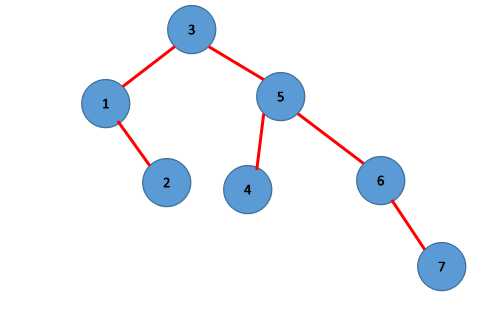二叉树的基本操作
Posted chenglc
tags:
篇首语:本文由小常识网(cha138.com)小编为大家整理,主要介绍了二叉树的基本操作相关的知识,希望对你有一定的参考价值。
二叉树的基本操作包含:
判断是否为空,获取节点数,先跟遍历,中跟遍历,后根遍历,层级遍历,查找元素

二叉树结构
public class Node Object value; //结点值 Node leftChild;//左子树的引用 Node rightChild;//右子树的引用 public Node(Object value) super(); this.value = value; public Node(Object value, Node leftChild, Node rightChild) super(); this.value = value; this.leftChild = leftChild; this.rightChild = rightChild; @Override public String toString() return "Node" + "value=" + value + ", leftChild=" + leftChild + ", rightChild=" + rightChild + ‘‘;
判断是否为空树:
public boolean isEmpty() return root == null;
获取节点数量:
public int size(Node root) if (root == null) return 0; int left = size(root.leftChild); int right = size(root.rightChild); return left + right + 1;
获取高度:
public int getHeight(Node root) if (root == null) return 0; int left = getHeight(root.leftChild); int right = getHeight(root.rightChild); return Math.max(left, right) + 1;
先根遍历递归:
public void preOrderTraverse(Node root) if (root == null) return; //打印根节点 System.out.print(root.value + " "); //创建左子树,进行先跟遍历 preOrderTraverse(root.leftChild); //创建右子树,进行先跟遍历 preOrderTraverse(root.rightChild);
中跟递归:
public void inOrderTraverse(Node root) //出口 if (root == null) return; //遍历左子树 inOrderTraverse(root.leftChild); //遍历根 System.out.print(root.value + " "); //遍历右子树 inOrderTraverse(root.rightChild);
中跟非递归:
@Override public void inOrderByStack() Stack<Node> stack = new Stack<>(); Node temp = root; while (temp != null || !stack.isEmpty()) while (temp != null) stack.push(temp); temp = temp.leftChild; if (!stack.isEmpty()) temp = stack.pop(); System.out.print(temp.value + " "); temp = temp.rightChild;
后跟递归:
public void postOrderTraverse(Node root) //出口 if (root == null) return; //先左 postOrderTraverse(root.leftChild); //再右 postOrderTraverse(root.rightChild); //后根 System.out.print(root.value + " ");
层次遍历:
public void levelOrderByStack() if (root == null) return; Queue<Node> queue = new LinkedList<>(); queue.add(root); int len; while ((len = queue.size()) != 0) for (int i = 0; i < len; i++) Node temp = queue.poll(); System.out.print(temp.value + " "); if (temp.leftChild != null) queue.add(temp.leftChild); if (temp.rightChild != null) queue.add(temp.rightChild);
递归查找元素:
public Node findKey1(int value, Node root) if (root == null) return null; if (root.value.equals(value)) return root; Node left = findKey1(value, root.leftChild); Node right = findKey1(value, root.rightChild); if (left != null) return left; if (right != null) return right; return null;
以上是关于二叉树的基本操作的主要内容,如果未能解决你的问题,请参考以下文章